Spectrometer 2.0 - 5.0 μm
The fastest and most sensitive mid-infrared spectrometer on the market
Key features
Up to 130 kHz full-spectrum readout rate
-80 dBm/nm sensitivity
2.0 – 5.0 μm bandwidth
Fiber-coupled input
Plug-n-play
Specifications
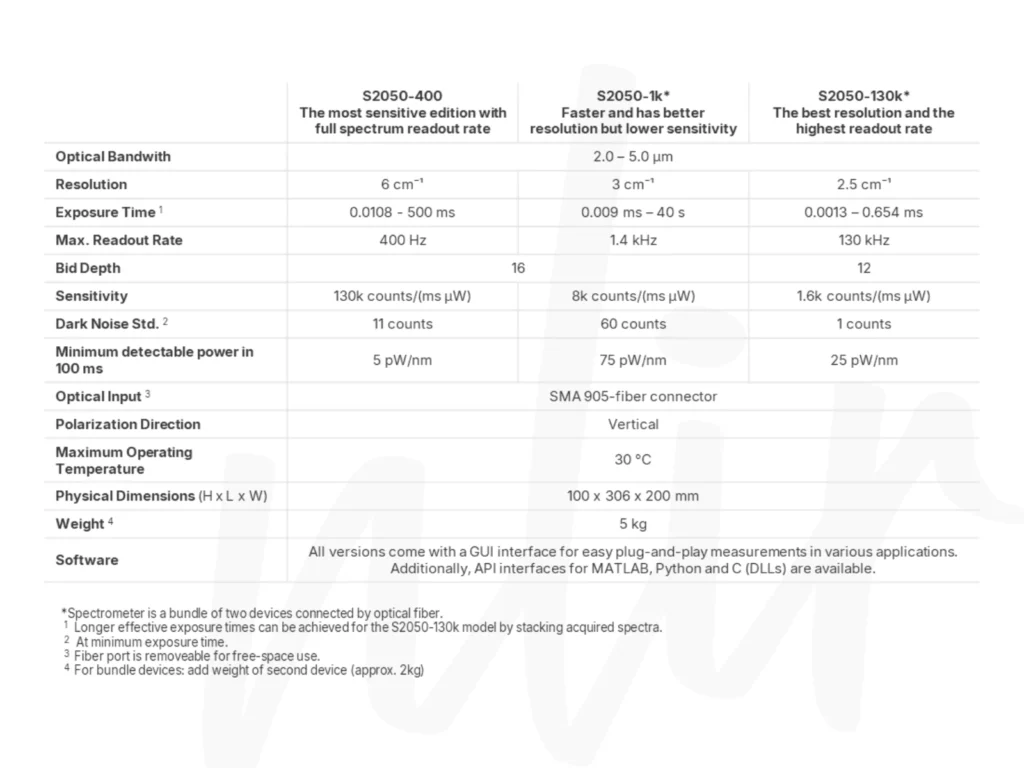
You can also download the data sheet to get more technical details.
Are you interested in S2050
mid-infrared spectrometer?
Request more information or the price quote below:
*Required fields. Your personal data is kept confidential.
REVIEWS
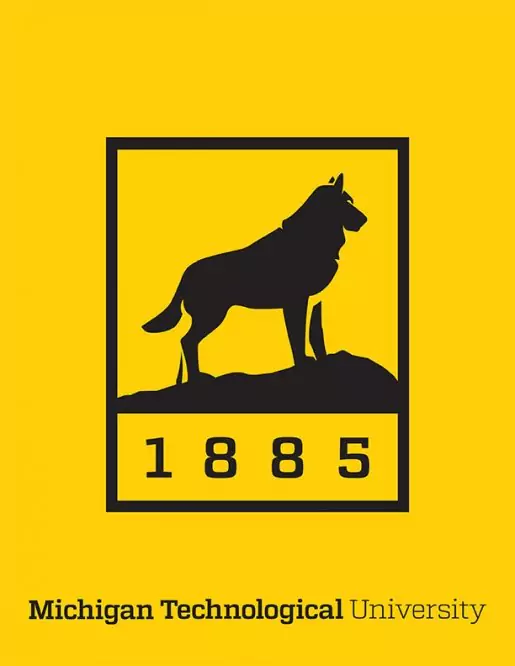

We are also impressed by the excellent custom service of NLIR, especially their transparency in knowledge sharing. It has been a pleasure working with their innovative and skilled technical team.
Spectrometer Details
Developers in both industry and research use mid-infrared (MIR) spectrometers for non-invasive characterization of gases, liquids, and solids as well as characterization of light sources. The NLIR 2.0 – 5.0 µm Spectrometer (S2050-400/S2050-130k) is based on a novel measurement scheme that upconverts the MIR light to near-visible light. Silicon-based near-visible light detectors are far superior to MIR light detectors in terms of detectivity, speed, and noise. The NLIR upconversion technology, therefore, brings these attractive features and the advantages that follow, to the MIR regime.
Both editions seen below have sensitivities at -80 dBm/nm or better, and the maximum full-spectrum readout rate is 130 kHz! As a result, the spectrometer enables the characterization of light sources and measuring spectral content from chemical processes with a time resolution of less than 10 µs.
Two application examples
Demo 1: Measuring liquid content with a mid-infrared fiber probe
How?
By using NLIR‘s S2050 mid-infrared spectrometer, you can get fast response and accurate resolution such that you can monitor liquid content in real-time.
Demo 2: Capturing 80.000 mid-infrared spectra per second.
How?
NLIR‘s kHz-rate spectrometer can upconvert mid-IR light to near visible wavelengths. This means that you can benefit from CMOS technology to capture the photons.
Spectrometer Measurements Examples
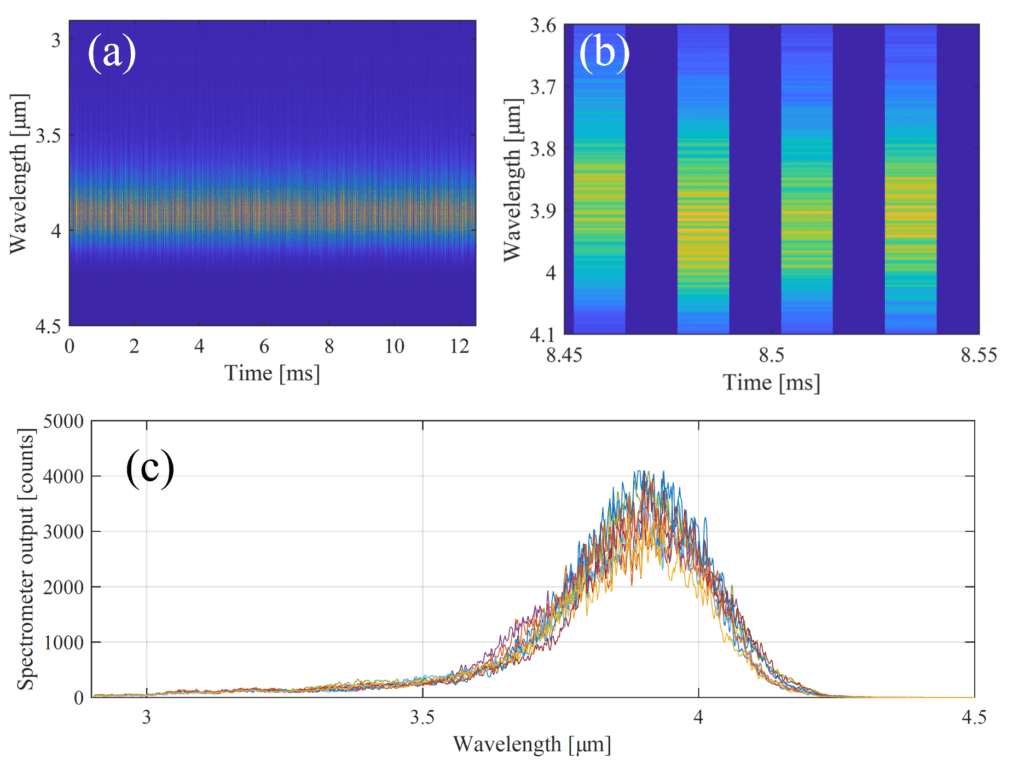
40 kHz Single Pulse Measurement
Single pulses from a super-continuum light source with a bandwidth of 3.0 µm – 4.2 µm and a repetition rate of 40 kHz of 2 ns pulses were measured with 80 kHz readout rate. In the figure, (a) shows raw data of 12 ms data acquisition, (b) shows a zoom where every other readout is empty as expected from 40 kHz rep-rate and 80 kHz sampling, (c) shows 10 raw consecutive spectra. The fluctuations in the spectra are by far dominated by noise from the light source.
Based on this measurement, the S2050-130k spectrometer is capable of characterizing fast modulations of infrared lasers and other dynamic events.
Plastic Transmission
A 30 W globar was the mid-infrared light source in these transmission measurements of a 50 µm polystyrene (PS) film and a 800 µm polyethylene terephthalate (PET) film. The S2050-400 spectrometer was set to 20 ms exposure time and capturing just single shots. No averaging or smoothing has been applied to the data subsequently.
Computer algorithms can certainly tolerate a much shorter exposure time, and thus a faster acquisition, in the context of plastic recognition or thickness analysis.
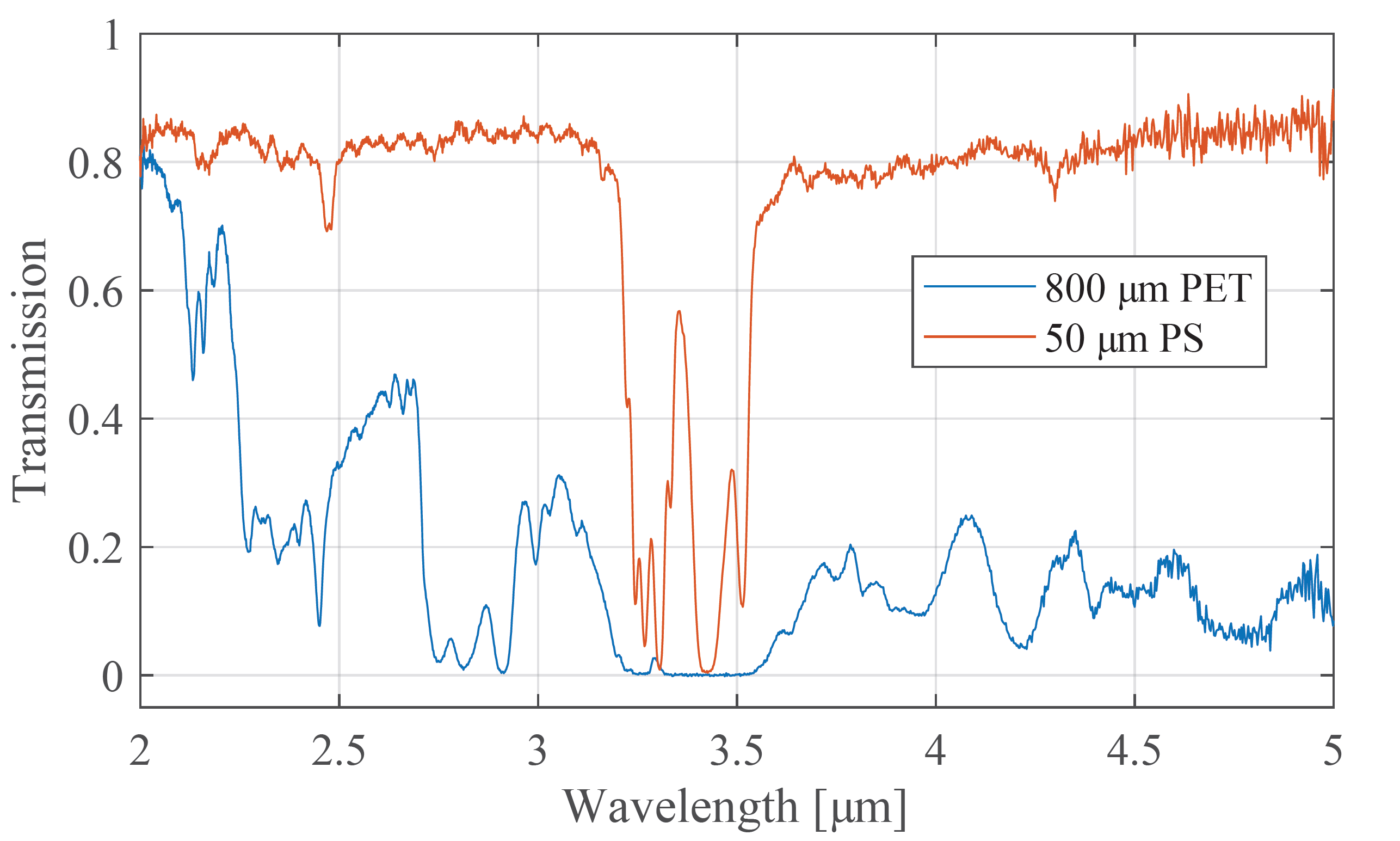
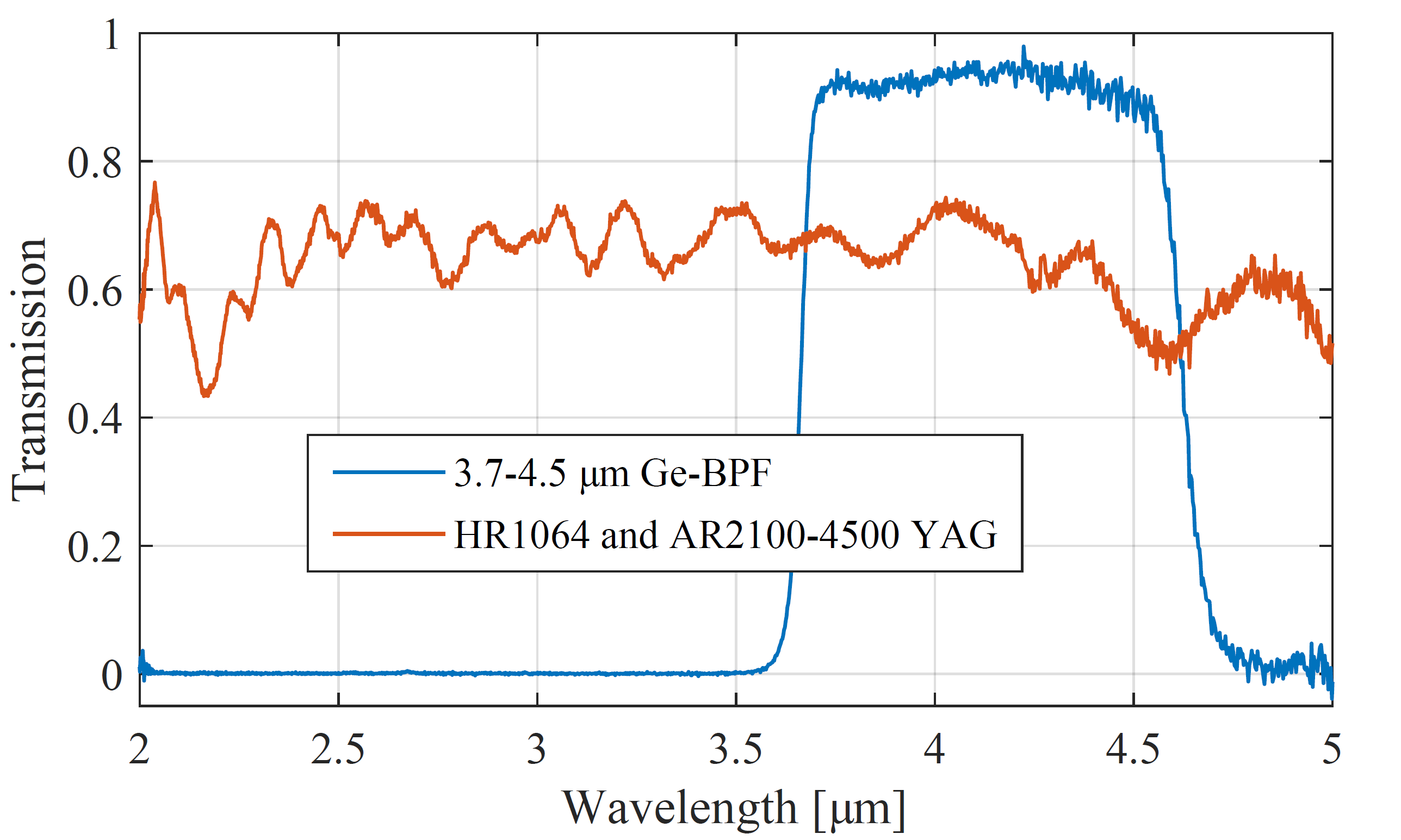
Optical Coating Transmission
A 30 W globar was the mid-infrared light source for these transmission measurements of coated optical windows: a Ge bandpass filter (BPF) for 3.7 – 4.5 µm and a YAG mirror coated with high reflection at 1064 nm and high transmission at 2.1 -4.5 µm. The S2050-400 spectrometer was set to 20 ms exposure time and captured just single shots. No averaging or smoothing has been applied to the data subsequently.
Coating quality control or production monitoring require such measurements.
Fiber Reflection Probe
A fiber reflection probe is a single-bounce attenuated total reflection (ATR) crystal that has fiber-coupled input and output. In this measurement, the inpur fiber received light from a 30 W globar, and the output fiber delivered the light from the probe to the S2050-400 spectrometer. By first taking a reference with the ATR probe in air, the probe was subsequently inserted into water, propane-2-ol, and sunflower oil, respectively, producing these absorption plots.
The measurements were single-shot at an exposure time of 100 ms, and a 4-pixel wide Gauss filter smoothed the data subsequently.

Published work using NLIR's 2.0 µm - 5.0 µm MIR spectrometer
In addition to numerous industrial applications of NLIR’s products, scientists have published their work using NLIR’s MIR spectrometer. Check them out here (requires access):
- Plastic sorting: ACS Sustainable Chemistry & Engineering (2021) and ACS Sustainable Chemistry & Engineering (2022).
- Optical coherence tomography: Light: Science & Applications (2019) and Optics Letters (2021).
- Trace gas sensing: Optics Express (2019)
Free Spectrometer Software
- A simple and easy-to-use software program.
- Data live stream, external trigger mode, background capture, transmission view, data saving, etc.
- API for spectrometers in MATLAB and Python available upon request.

